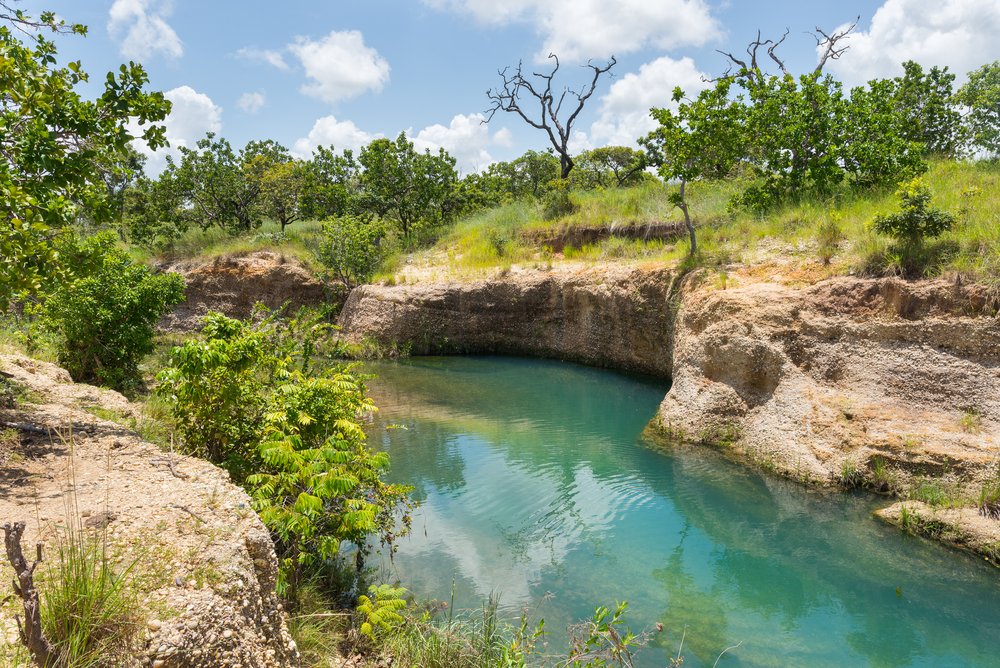Laguna de La Restinga Overview
Laguna de La Restinga National Park, known locally as Parque Nacional Laguna de La Restinga, is a coastal lagoon and mangrove ecosystem located on Margarita Island, Venezuela.
Covering approximately 48.5 square miles (125.5 square kilometers), this protected area is situated between the eastern and western halves of the island, serving as a vital ecological link and an essential sanctuary for marine and bird life. The park was established in 1974 to protect its diverse coastal environments, which include shallow lagoons, extensive mangrove forests, sandy beaches, and seagrass meadows. It is one of the most visited national parks in Venezuela due to its stunning landscapes and rich biodiversity.
The terrain of Laguna de La Restinga National Park is dominated by calm, brackish waters crisscrossed by an intricate network of narrow canals and estuaries. These waterways wind through dense mangrove forests, where red, black, and white mangroves provide crucial shelter for various marine species.
The sandy beaches that border the park open up to the Caribbean Sea, offering a striking contrast to the enclosed mangrove environment. The shallow waters of the lagoon create an ideal habitat for seagrasses, which support an abundance of aquatic life. The park’s coastline also features dunes and salt flats, adding to the diversity of the landscape.
Wildlife within Laguna de La Restinga National Park is abundant, particularly in terms of bird species. Visitors may observe flamingos, herons, egrets, pelicans, and frigatebirds soaring over the mangroves or wading through the shallows in search of food.
The lagoon and its surrounding waters support various fish species, including snook, tarpon, and mullet, as well as shrimp and crabs. Sea turtles, such as the hawksbill and green sea turtle, occasionally make appearances along the park’s beaches. The mangroves also serve as a refuge for caimans and iguanas, while small mammals like raccoons and opossums navigate the dense foliage.
One of the most popular features of the park is its labyrinth of mangrove tunnels, which can be explored by boat. These narrow waterways, often called “tunnels of love,” are a favorite among visitors who enjoy gliding through the peaceful, shadowed passages beneath the interwoven branches.
Playa La Restinga, a long, sandy beach stretching along the northern side of the park, is another highlight, offering opportunities for relaxation, swimming, and sunbathing. The beach is accessible by boat, making the journey across the lagoon part of the adventure.
The leading ways to experience the park include boat tours led by local guides, who navigate the maze of mangrove channels while explaining the ecological importance of the region. Kayaking is another immersive way to explore the lagoon’s tranquil waters at a slower pace, allowing for closer encounters with birds and marine life.
Fishing is a common activity in the park’s waters, with both recreational and small-scale artisanal fishing taking place in designated areas. Photography enthusiasts also flock to the park to capture its stunning scenery and wildlife.
Conservation efforts within Laguna de La Restinga National Park focus on preserving its delicate mangrove ecosystem, which plays a critical role in coastal protection and biodiversity. However, challenges such as pollution, overfishing, and the impact of tourism continue to pose threats.
Increased environmental education and stricter regulations on human activity have been implemented to mitigate these issues. The park remains an essential refuge for many species and a prime example of Venezuela’s coastal natural heritage.














































































